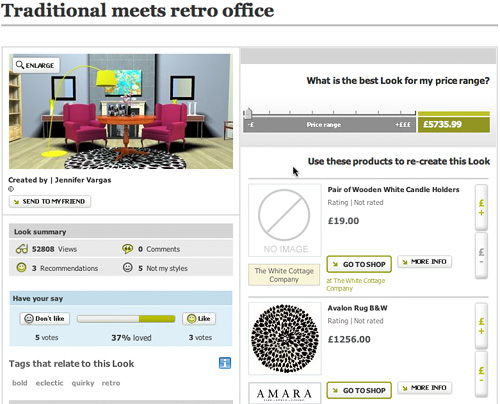Is the backdrop for sponsorship changing?
There is a lot of talk in both the marketing and sports arenas that the climate for sponsorship is changing. Sponsorship in football isn’t new. During the 1920s Lillywhites negotiated exclusive rights to publish FA fixture lists. In the 30s the top players of the time such as Sir Stanley Matthews, were seen to endorse and advertise a range of products from cigarettes to mens cosmetics. So David Beckham was beaten in his endorsements by some 70 years.
In the 70s football was in the midst of a mini economic crisis, crowds were falling and players’ wages increasing. The Football League decided to create some (short-lived) tournaments such as the Texaco Cup and the Watney Cup (won by Bristol Rovers). However it was the Football League Cup that secured the first major sponsorship deal in 1982, the Milk Cup was formed. Most of the major tournaments have since secured sponsorship deals, either associate or title sponsorship.
The combined factors of the economic downturn and the rise of online for more than just purely acquisitional methods of promoting your brand, has helped to create this perception. Examples of the changing commercial climate in football were cited, when the likes of Setanta failed to make their rights to major football pay. The collapse of Setanta in the UK despite rights to Premier League football and Scottish Premiership and several other high profile sporting occassions could be perceived as the end of the commercial euphoria that has changed the English game.
Never has the English game been under this kinf of pressure since ITV Digital collapse put a number of English clubs at risk. The increase of clubs entering administration in the game at the lower levels also adds fuel to the fire. The current decline of the pound against the Euro (combined with 50% tax rate) is also resulting in some top players such as Ronaldo moving abroad or considering the move.
All doom and gloom?
However, there is still an influx of cash from (in the main) overseas backers, meaning football at all levels is still getting investment. This isn’t just top flight any more, the likes of Southampton and Notts County are also being pushed. The fact that Setanta had their rights replaced so promptly by the likes of ESPN also helped ease some of the concerns.
There are also some key sponsorship deals that have been signed recently including Chelsea‘s deal with Samsung.
A new approach
Obviously it isn’t always possible to rely on investment from overseas billionaires. For every Chelsea and Abrahmovic there are 50 not so fortunate clubs. So how do they survive? Well frankly, some don’t, however others have discovered more creative approaches to their sponsorship.
Some of the clubs have benefited from giving away naming rights. For example when Arsenal moved from their long-term Highbury home to their new stadium, Emirates Airways secured a reported 10 year muli-million pound deal to create the Emirates Stadium. A number of traditional supporters think this is a step too far, however most accept that this is the current trend and the only way to stay competitive. So stadiums have been sponsored, shirts don logos, individual players have become commodities, the only thing left is the club itself, steeped in tradition and part of the community. Not for too long. Whilst accepted overseas with the likes of Eindhoven being name PSV (Philips) and Salzburg (FC Red Bull Salzburg) bringing corporate life to the centre of their existence. Now financially troubled Stirling Albion are looking to go the same route and offer naming rights on a five year deal. Whilst it will undoubtedly annoy the real traditional football followers it is better to keep the club going.
Whilst other lower league clubs continue to grapple with the current climate not all are going down the extreme route of auctioning their identity. Bristol Rovers took the creative route to gain revenue by raffling its shirt sponsorship. The club claim to have come up with the idea as they feared their sponsorship revenue would decrease if they managed to secure one at all. The raffle is estimated to have generated double the revenue that they would have expected for sponsorship in a growing economy. It also created a lot of buzz around the community and generated some good PR.
Whatever happens to the economy overall, the British game will continue and will without a shadow of doubt continue to generate revenue, either from wealthy investors, major sponsorship tie-ups or the inventive methods shown by smaller clubs such as Stirling Albion and Bristol Rovers.
What about the sponsors?
Never has the need for sponsors to connect to the recipients of their sponsorships been so great. With the growing consumpion of alternative media, people are now driving the news and owning the media agenda. With the likes of Twitter or Facebook, users can endorse or undemine a sponsorship within mintues of its announcement or perhaps more importantly within minutes of being exposed to it.
 Any organisation that sponsors any property, whether it is a football club, event or a broadcast property such as Big Brother, needs to have a reason to be associated. When I was at Nationwide we developed a whole campaign that enveloped our sponsorship properties (primarily the England Football Team). Our “Sponsored by You” campaign put all the perks of being a corporate sponsor back in the hands of our members and the average fan. Members of Nationwide could win VIP tickets to see England, get a player to a local school or get signed merchandise. It also encourage winners to post videos or photos of their experience. This kind of approach allows the organisation a place within the recipients passion, and makes them feel welcomed.
Any organisation that sponsors any property, whether it is a football club, event or a broadcast property such as Big Brother, needs to have a reason to be associated. When I was at Nationwide we developed a whole campaign that enveloped our sponsorship properties (primarily the England Football Team). Our “Sponsored by You” campaign put all the perks of being a corporate sponsor back in the hands of our members and the average fan. Members of Nationwide could win VIP tickets to see England, get a player to a local school or get signed merchandise. It also encourage winners to post videos or photos of their experience. This kind of approach allows the organisation a place within the recipients passion, and makes them feel welcomed.
Sponsors need to move away from thinking about sponsorships as merely a means to get their name out to a mass audience. They really need to make them work or face a waste of marketing spend that could have been utilised to a far greater degree elsewhere.

